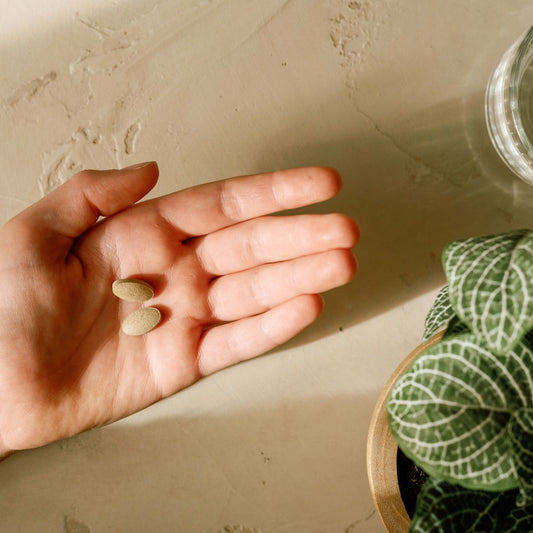Fault. Disease. That which causes problems. When we consider these translations of the word
Understanding which dosha is out of balance and in what ways is the cornerstone of all Ayurvedic remedies, since having balanced doshas is the first element in the definition of health, per the Ayurvedic text Sushruta Samhita.
As foundational as this concept is, figuring out which dosha has gone awry in our bodies isn’t always as simple as it sounds.
Because of the ways in which doshas overlap and influence each other, the biases we have toward our own bodies, and the role of external factors including climate, social interactions, media, and more, a set of symptoms might look one way but really be something else. One dosha may be the root cause or etiology, but provoking another dosha and causing a mixed manifestation.
Doshas clearly don’t play nice—with our bodies or with each other!
Still, there are times when it’s clear why we’re experiencing a certain imbalance. Maybe we’ve had a stressful stretch of work consisting of late nights and an IV caffeine drip—so vata and pitta start showing up. Maybe we’ve been pressing snooze until late in the morning and feel the sluggishness of kapha in our mind and gut.
For every instance of an imbalance that makes sense, there are ten (or more!) that seem to come out of nowhere and make us scratch our heads as to what we’re feeling—and why.
I hope the following insights will help to shed a little bit of light on what to think about, and where to take action, when your doshas are acting extra mischievous.
Vikriti and Prakriti: Types of Imbalances
No one likes feeling unwell. Even if you have no awareness of Ayurveda, the disruption in your normal diet and lifestyle is enough to make you feel crummy and out of sorts. When your favorite foods make you queasy and you can’t enjoy your regular activities, life loses its luster.
Prakriti: Original Constitution
In Ayurveda, we usually see patterns of imbalance that align with someone’s prakriti, or original constitution.
That’s because an individual already has more of the gunas (qualities) of their prakriti, so if they’re exposed to those same qualities (from external or internal factors), they’re more likely to become excessive and cause an imbalance in your system.
For instance, a pitta-type is more likely to get a sunburn after a long day at the beach or respond to a mistake made at work with an outburst the whole office can hear. Their baseline quantity of hot and sharp gunas is already high, so they react more strongly to those qualities in the environment.
Similarly, if a kapha-type regularly consumes yogurt for breakfast and ice cream for dessert, or stays in bed until noon for weeks after a devastating breakup, they might experience occasional congestion and nausea because their system already has more of the heavy, cold, and sticky qualities of those foods and activities.
When you get sick in alignment with your prakriti, it still feels bad—but perhaps in a more familiar and straightforward way.
The foods and practices you normally turn to to stay balanced are still the medicine, just turned up a notch in quantity, frequency, or potency. You likely have a strong natural instinct for how to make yourself feel better.
Vikriti: Current State of Balance
But what happens when you get an imbalance that’s different from your prakriti? It’s one hundred percent possible, so if this occurs there’s nothing abnormal about you! Vikriti can come from internal and external factors, and sometimes we are exposed to gunas that lean us in a direction that overrides our typical tendencies.
That same kapha person will get a pitta imbalance if you leave them out in the sun long enough, or if you feed them enough hot chili peppers and coffee.
As the Ayurvedic proverb says, anything can be a poison or medicine depending on the dose, frequency, and the person consuming it.
When this occurs, the imbalance can be even more jarring because it’s unfamiliar. The remedies required might seem out of character—things you’d never normally turn to and might not even like.
A kapha with a pitta imbalance might benefit from things that they’d normally shy away from—cool and moist things, like yogurt, grapes, or even ice cream. It can be hard to be honest about the nature of the imbalance when it’s so foreign, and might even cause a delay in treatment.
This is a reason to avoid self-diagnosis and seek outside support when possible, since we’ll be biased toward what’s familiar, even if it might make the condition worse. For example, a vata who gets a sunburn might choose their go-to remedy for skin irritation, abhyanga, and find the heat and oiliness of that practice actually aggravates the excess pitta in the skin.
The Play of Prakriti and Vikriti: Expanding our Understanding
To overcome these obstacles, one should adopt an attitude of honesty, expansiveness, and inclusivity.
It’s common to walk around with blinders on once we learn our prakriti, assuming that those qualities and elements are the only way we can experience our bodies and the world. In reality, we all contain all five elements and all three doshas, and our gunas slide across their spectrums from day to day, season to season, and decade to decade.
While living in that wider reality through the ups and downs of imbalance might not be enjoyable, it’s an opportunity to really experience the ways in which Ayurveda can support our health no matter what the problem is.
When we’re honest about our state of health and take the necessary actions to restore wellness, we’re practicing ahimsa—the yogic principle of not doing harm—and avoiding prajnaparadha—a cause of disease that stems out of acting in a way we know is not right.
We may also gain more compassion for others who have different constitutions than us.
I have a vata prakriti, and when I was sick this winter with a pitta imbalance of daily fevers, I finally understood why all my pitta friends were so uncomfortable in summer! And when the summer heat started picking up this year in a way that affected even my normally cold constitution, I included pitta-balancing choices in my routine, like drinking aloe juice and swimming.
The last thing to consider is that our prakriti is not, in and of itself, an imbalance. When we are healthy, we all have a dominance of one or more doshas that we should be mindful of but don’t need to treat or “fix” with the opposite qualities. In fact, a healthy person would follow seasonal guidelines for diet and lifestyle with moderation, so as to not aggravate their prakriti.
Our kapha friend might happily enjoy an ice cream on a hot summer day—though they should have it in the afternoon, and just once in a while rather than every day. The cold, heavy qualities of the ice cream are indicated in the pitta environment, so long as the kapha-type person isn’t already experiencing an excess of kapha.
If you’re living your life with your prakriti blinders on, you might ask yourself if you’re doing so because there is a true imbalance in that dosha, or if you’re acting out of fear. Then reassess what’s actually going on in your system, and go from there!

Vikriti and Rtu: Seasonal Influences
The examples above describe what happens when your vikriti doesn’t match your internal state, or prakriti. But vikriti is also influenced by external factors. This section will explore what happens when your vikriti doesn’t align with the external environment of the rtu, or season.
When we’re healthy, the qualities of nature will generally guide our choices in diet and lifestyle.
Think about how your natural cravings change throughout the year—watermelon is divine in summer but less appealing in winter. Likewise, you might gladly curl up with a bowl of stew in the winter, whereas just thinking about stew in summer makes you sweat.
These choices are personalized by prakriti—a pitta type might be able to eat a whole watermelon, whereas a vata or kapha might only want a slice or two.
Imbalances tend to follow seasonal trends as well, since the rise in external gunas will affect people with those qualities more strongly. And imbalances that occur “in-season” have different flavors based on the person experiencing them.
In summer, the excess pitta qualities in nature might show up clearly as more pitta in a pitta-type (sunburn, competitiveness, anger); but they might affect a vata-type by producing dryness or a kapha-type by reducing appetite or causing joint discomfort.
But what happens when a vikriti follows neither seasonal trends nor their personal variations? Since all the doshas and gunas exist at all times, it’s definitely possible to be working with excess vata in kapha season, kapha in pitta season, or pitta in vata season.
How do we deal with balancing measures that may feel “wrong” for the season?
I know this situation well, since it’s how I began my journey with Ayurveda. When I had my first consultation, I was nursing a years-long (life-long?) vata imbalance. It was also mid-July. So on top of adjusting to the general Ayurvedic recommendation of eating warm, cooked food, I was eating all vata-balancing foods—which are energetically warming and totally out of season.
It was challenging to enjoy summer gatherings, but I was so desperate to feel better I persevered. And dear reader, it worked! But by the next spring, I was noticing that my vata-balancing routines weren’t making me feel so great.
I first assumed that it meant something new was wrong, and I’d have to start all over again. When my practitioner explained that it meant my vata was in the normal range—and that what I was doing earlier to reduce vata was actually building kapha—I came to a new understanding of what living Ayurvedically meant.
You're not set for life when you figure out your prakriti—or your vikriti. This tradition is based upon nature, which is always changing.
I also took away a couple tips for making a protocol feel more comfortable when it’s uncommon for the season.
- First is the mindset. Remember that it’s not forever. The seasons will cycle through again, and the next time it comes around you’ll be different!
- Second is negotiation. There is some overlap among all the doshas, so likely there are things that are in-season and suitable to your vikriti.
- In my situation, both vata (my vikrti) and pitta (the season) were balanced by sweet and heavy qualities—so cooked, spiced seasonal fruit were a staple.
- As another example, if someone had a pitta imbalance in kapha season, the qualities that balance both are bitter and drying/astringent. Many medicinal herbs fall into this category, as well as common garden herbs like sage, rosemary, thyme, and oregano—the ingredients of a Mediterranean feast!
Seeing opportunities instead of limitations is the key here. We are never influenced by only one thing, and when our bodies aren’t aligned with the seasons it simply means we’re dwelling somewhere in the vast in-between of the microcosm and macrocosm. What might you discover in this new territory?
|
Vikriti |
Rtu |
Qualities that Balance Both |
|
Vata |
Kapha |
Warm, sharp |
|
Vata |
Pitta |
Sweet, heavy, slow |
|
Pitta |
Kapha |
Bitter, astringent, mobile |
|
Pitta |
Vata |
Sweet, heavy, slow |
|
Kapha |
Vata |
Warm, sharp |
|
Kapha |
Pitta |
Bitter, astringent, mobile |

Vikriti and Kala: Changes Over Time
Within our microcosm, we also experience seasons in the form of phases of life. The dominance of doshas during different decades might not be front of mind for most of us, but it’s common to experience shifts in our gunas simply from the passing of time. And when we do, it can feel confounding.
For many, this conflict becomes most apparent during perimenopause and after menopause, when vata dosha takes over regardless of the person’s prakriti. The same increase in vata is true for all genders, though not everyone experiences the same reproductive changes.
For vata types, this might feel like a more extreme version of imbalances they already know well: erratic menstrual cycles and moods, dryness, or difficulty sleeping. But for pittas, the decline in cognition and focus can make a person wonder who snatched their body (and mind) overnight.
Kapha types tend to have an easier time with the aging process because they have extra moisture and stability in their systems, a natural antidote to vata.
Other life stages and transitions can generate similar troubles. In the kapha time of life, children might have more tendency toward occasional congestion, mucus, and seasonal allergies. Kapha children might continue to work with these imbalances, whereas pittas and vatas generally grow out of them.
During pitta time, from puberty through midlife, there might be heightened emotional sensitivity, drive, ambition, and skin irritations. Vata time, lovingly known as the wisdom years, produces more instability in body and mind, with more likelihood of hearing loss, dryness, memory issues, and lighter sleep.
My ultra-pitta dad, who epitomized the “strong silent type” most of his life, became a chatterbox in the last decades of his life—throwing my family a curveball as we tried to figure out how to talk to a man who never wanted to talk before.
While our prakriti will stay stable throughout our lives, we’ll all notice subtle shifts of our personalities and bodies. What’s different about these shifts is that they’re not technically an imbalance—they’re a natural, expected change. We treat them like you would the changes in the seasons of nature, not as problems but as things we adjust to.
These are times of life in which we get to expand our sense of who we are and how we live.
Especially as we move into the vata years, when the cultural expectations of workaholism, productivity, and busyness seem less interesting, we might discover an entirely different side of ourselves, like a flower that slowly blooms over the course of its life.
Vikriti and Manas: The Power of the Mind
We might also confront obstacles to healing when we find ourselves under the influence of culture and outside voices—even “expert” voices. I think of this interplay as “vikriti vs. manas,” since the mind, manas, is the intermediary between the external world and our internal world, largely via our senses.
It is all too easy to be swept up in trends and sensational claims about diet and lifestyle that run counter to the ancient wisdom of Ayurveda. And, more importantly, counter to the wisdom in your own body and heart about what’s right for you at any given moment.
Whether or not you have an imbalance, it’s important to take a measured approach to all information we receive about our health. While it’s common to feel afraid and eager to return to health when we’re not feeling well, it’s all too common to look for the quick fix to resolve symptoms rather than addressing the root cause.
Ayurveda attempts to do both—give people relief and address the imbalance at its source.
Often this involves an integrated approach that includes body, mind, and spirit. We don’t become sick overnight—even in the case of an acute illness. And unraveling the chain of events that contributed to the imbalance takes time.
These days, just thinking about something can result in a slew of information from the internet and social media bombarding your senses and shaping your mind. You don’t need to tune it all out, but remember to pause before starting a protocol you read about online—especially if it seems too good to be true (it usually is!).
Even well-meaning friends and family offering advice from that time they felt something similar isn’t something you need to follow. Their bodies are not yours, and their results won’t be yours, either. Healing is always a process that happens internally. No herb, pharmaceutical, doctor, or practitioner can do it for you.
The best results come when we involve our mind in our healing and hold a sense of faith in our capacity to transform.
This isn’t woo-woo positive thinking—it’s the scientifically proven placebo effect.1 The power of our minds in this process is in maintaining focus on our innate state of balance, which neurology refers to as "remembered wellness."2
In this state, we are attuned with our sense of wholeness and connection, turning on the parasympathetic nervous system, which is essential for maintaining homeostasis in the body. Don’t be misled by the term homeostasis—it’s anything but static.
Only in the parasympathetic mode does the immune system properly function, as well as cell repair and turnover, digestion and elimination, and cycling of reproductive hormones that help regulate the stress response. These processes are essential for healing and prevention of imbalance.
This underscores the importance of relaxation practices in our daily routines. Whether it’s meditation, yoga, or time in nature—however you get your mind to put on its parasympathetic glasses is something worth prioritizing in your daily life.3
From Fault to Flow
Learning to see change in our bodies with compassion and curiosity is one of the biggest lessons that Ayurveda teaches us.
Whether you find yourself with an imbalance that’s familiar or unfamiliar, in-season or out of season, challenging your sense of identity or not, they’re all opportunities to remember the infinite capacity we all have to exist as microcosms of the macrocosm.
Perhaps the reason that doshas are considered “faults” isn’t because they reflect something wrong with us—but because everything can start to feel wrong when we resist the flow of the universe.
With this in mind, we can view our imbalanced doshas not as a problem to fix, but as a beneficent reminder to slow down, tune in, and make whatever adjustments are needed to rediscover our flow.










